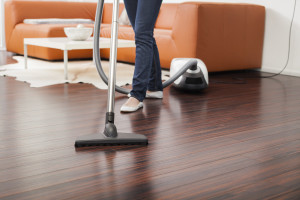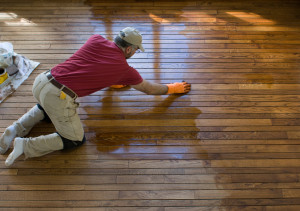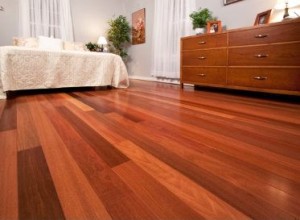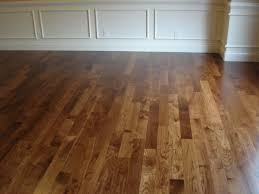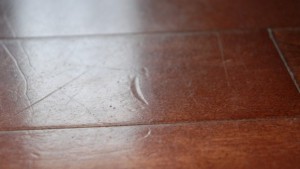 There are lots of suggestions available on the web about what to do with various problems you may have with your hardwood floor. One piece of advice that we always give to readers is that before you try something on a hardwood floor, always experiment first. If you have a left over piece of hardwood floor use this piece to try your solution on first. If you do not have an extra piece of flooring, then select a location that is out of the way and try it on that area first. This is the best way to avoid making a small mark even worse on your floor and having everyone notice it. This is one of the cardinal rules of Tackling Simple Wood Floor Problems.
There are lots of suggestions available on the web about what to do with various problems you may have with your hardwood floor. One piece of advice that we always give to readers is that before you try something on a hardwood floor, always experiment first. If you have a left over piece of hardwood floor use this piece to try your solution on first. If you do not have an extra piece of flooring, then select a location that is out of the way and try it on that area first. This is the best way to avoid making a small mark even worse on your floor and having everyone notice it. This is one of the cardinal rules of Tackling Simple Wood Floor Problems.
Tackling Simple Wood Floor Problems
The following are a few suggestions, that are untried by the writer, however they have been picked up over the years as potential solutions to hardwood floor problems.
When white water spots mar your floor’s finish? Add a small amount of mineral spirits to an extra-fine (0000) steel wool pad and gently rub the area in a circular motion. Keep the area well ventilated as you work. Do not overwork the area or you will remove the finish that is on your hardwood floor. If your steel wool is not fine enough, you could damage your floor and you may see scratches across the wood. Take extra care when performing this activity.
Heel marks that won’t wipe off? Adding a small amount of wax to an extra-fine (0000) steel wool pad and gently rubbing the area in a circular motion will often remove the heel mark. However once again, if you over do it, you can remove the finish and leave a dull area on your hardwood floor.
Food stains leaving a mark on the floor? Wipe the surface with a damp cloth, rub dry and wax. When removing any stain (from wood or carpet), always work from the outside edge in toward the center.
Secrets to Preserving Hardwood Floors: 3 Must-Follow Rules
To extend the life of your hardwood floor regardless of what the finish is, use these three simple rules:
- Sweep or vacuum often. Ground-in dirt destroys wood floors. To prevent buildup, clean floors once or twice a day in high-traffic areas, like the kitchen and dining room. In fact avoid placing hardwood flooring in the kitchen. It is a very high traffic area and pron to food spills.
- No time? Cut down on sweeping time by placing a doormat at each entrance to your home. Take your shoes off and leave them at the doormat. Vacuum this area often. (Some estimates suggest that doormats eliminate 80 percent of the dirt tracked inside!)
- Wipe up mud and spills immediately. Make sure that you clean all spills, including food that can leave marks. Wood is easily damaged by water.
- Choose carpeting wisely. While carpets will protect the floor there are a couple of issues. The floor surrounding the throw rug or carpet will bleach over time from the sun. If you aim to protect your wood floor with a rug, remember that rug dyes have been known to stain floors, and plastic backings may affect the wood finish. Plastic or rubber backings may stick to the floor and be very difficult to remove without damaging the floor. Ask an expert from the carpet store to recommend an appropriate underpad as a safeguard.
Our next post will be about removing dents and marks in your hardwood floors. If you found this post helpful and wish to leave a comment please do so. We also appreciate any suggestions that will also help our readers as well. If you are an expert please feel free to comment.
